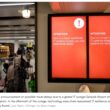Video, still the killer app, has quite a few challenges
LAS VEGAS — When people think of public-safety broadband communications, the very first thing that pops into most minds is video, which is undeniably valuable as a crime-prevention tool and as a force multiplier. But as video becomes increasingly expansive and ubiquitous in municipalities from coast to coast, it brings with it several technological and operational headaches, according to panelists who spoke on the topic this week at the International Wireless Communications Expo (IWCE).
In some ways, video has come a long way in a very short time. For example, cameras not that long ago struggled to capture images in low-light and back-light situations, but today's systems are able to correct for this. Also, video resolutions improved dramatically with the advent of IP-based digital systems, which are a huge improvement over analog systems; the clearer the picture, the more effective the video is in terms of situational awareness, as well as criminal investigation and prosecution.
"When we first started … we had a motion JPEG camera that took one frame every 17 seconds — you're not going to get a lot of situational awareness when you're getting an image every 17 seconds," said James Marcella, director of IP video solutions vendor Axis Communications. "And with motion JPEG, you needed about 8 Mb/s to deliver that one frame, which was pretty ridiculous. With H.264 , you can get … 60 frames per second in a manner that's doable over wide-area networks."
This might explain a trend that is seeing more and more citywide systems popping up. The leader in this regard is the city of Chicago, which has the nation's most extensive video surveillance system, with nearly 20,000 cameras scattered across the city, including roughly 4,000 cameras in its schools and another 3,000 at its airports. The system has been used to great effect, said Jonathan Lewin, who commands the city's Information Services Division. According to Lewin, more than 5,000 arrests have been made as a result of footage captured by the cameras since the system was first deployed in 2006.
However, the system generates a mind-boggling amount of footage that has to somehow be sifted through, which is a challenge.
"A human being can only watch so many simultaneous video streams. … We think analytics can make this even more effective," Lewin said.
Indeed, the value of analytics technology is that it can be used to alert video monitors that an anomaly has occurred; that trigger will prompt the monitor to take a closer look at the footage captured at the time of the incident. One example cited during the session involved a van being driven into a railway tunnel. The system would know that a van is much smaller than a train car and shouldn't be there.
The problem right now is that analytics haven't developed as rapidly as the video systems they are designed to support.
"Video analytics will be part of the overall solution, but they still have a ways to go," said Jasper Bruinzeel, vice president of sales and marketing for wireless video solutions vendor CelPlan Technologies. "We see this as a future trend, but it's not mature yet."
RELATED VIDEO: Key public safety considerations for using video
There are several other challenges that have to be addressed. Video is a bandwidth-intensive application, so a lot of thought has to be given to backhaul when designing a surveillance system, particularly one that is citywide. Also, policies have to be created to govern how long the video will be stored and how, driven by both operational considerations and privacy issues.
According to Donald Zoufal, safety and security industry executive for System Development Integration, who served as a consultant to Chicago's video deployment, there are significant concerns that video captured and then stored for a long time could be used to track the movements and whereabouts of citizens in violation of theFourth Amendment, which guards against unreasonable search and seizures. Zoufal believes that the U.S. Supreme Court ultimately will be forced to decide the matter.
"We've already seen it in the context of EZ Passes on tollways, where the divorce lawyer subpoenas the [license-plate image captured by the system] and finds out that the husband was on the way to his paramour's house as opposed to someplace else," Zoufal said.
"We're just on the cusp of those sorts of issues," he continued. "Collecting the data is one issue, but the real battleground is going to be over how long you can keep it."
Another issue concerns how the video ultimately will be disseminated. "How are you going to keep it off You Tube?" Zoufal said.
















